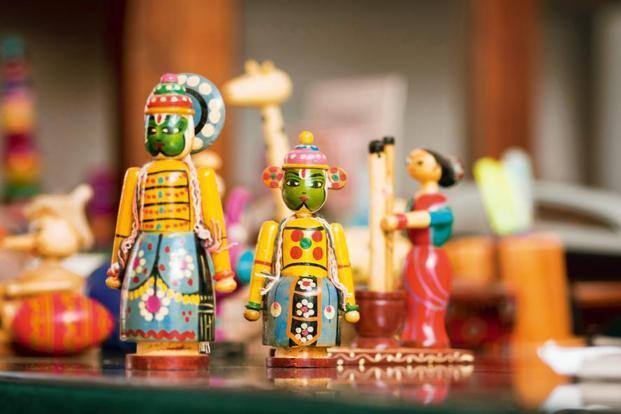Smriti Malhotra
Channapatna toy making is making headlines lately due to the newly unveiled Dancing girl at the International Museum Expo 2023 that was held at Pragati Maidan, New Delhi. Let’s dive into the curious case of Channapatna toy-making. These delightful lacquer covered wooden toys are made with soft ivory or hale mara by the villagers of Channapatna, a small town on the Bengaluru-Mysuru highway.
These toys are mass-generated by industries and factories but is a community based art form that is made in simple workshops in the Channapatna households. It is one of the few self-sustaining communities in the region that continue to make these toys.
The hands of the artisans work smoothly across the tools that make these Channapatna toys, from cutting the readily available wooden blocks to lathering lacquer on the painted toy.
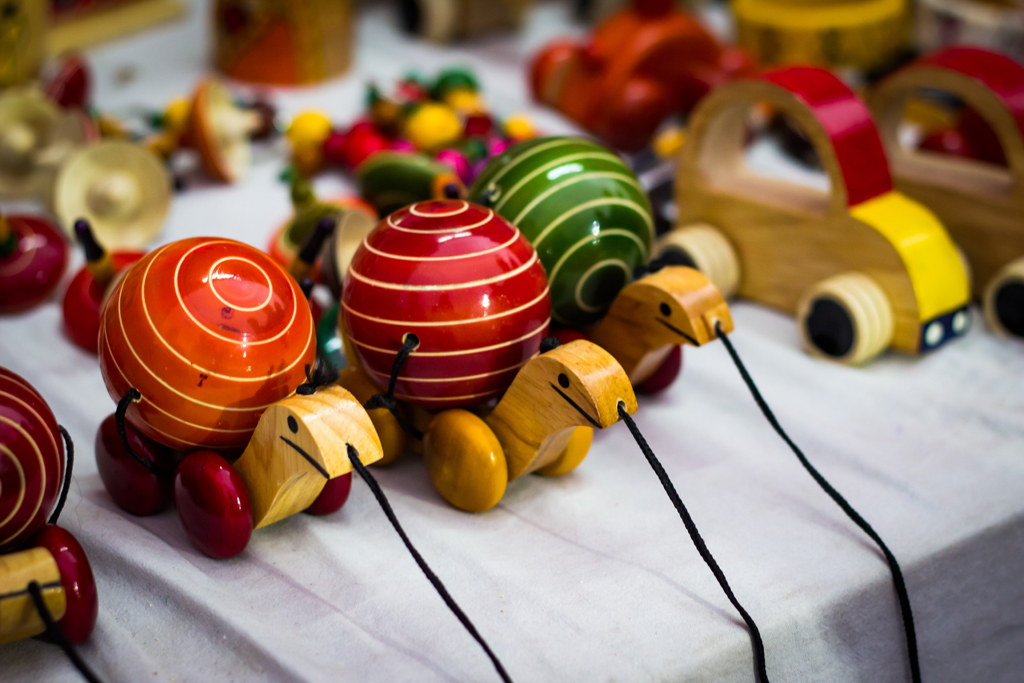
The residents of this toy-town have been making this craft for the past 300 years, they have a delightful moniker called the ‘Gombaeya Ooru’ or the land of toys. Many legends are afloat on how the people of Channapatna got into making these lovely toys, among them the most popularly known is that of how Tipu Sultan, Tiger of Mysuru introduced the art of toy-making in the town is recited to anyone interested. In the 18th century, when Tipu was ruling the deccan from Srirangpatna, a foreign dignitary arrived to his court bearing gifts. These gifts were beautifully carved, painted wooden toys that came all the way from Persia. Impressed by these dolls/toys Tipu asked Persian artisans to be called to India and teach the art of making such toys to his people and thus began the making of these toys in the small town.
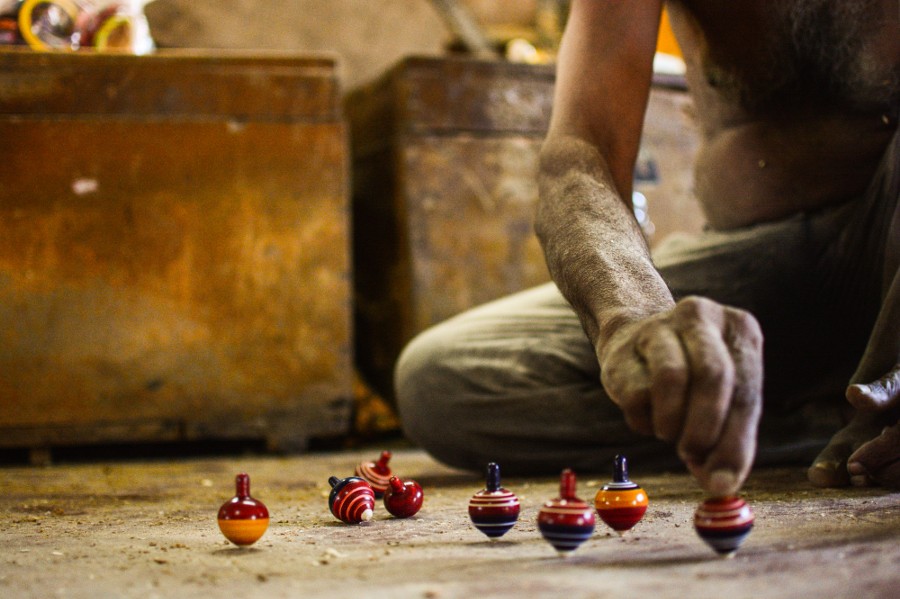
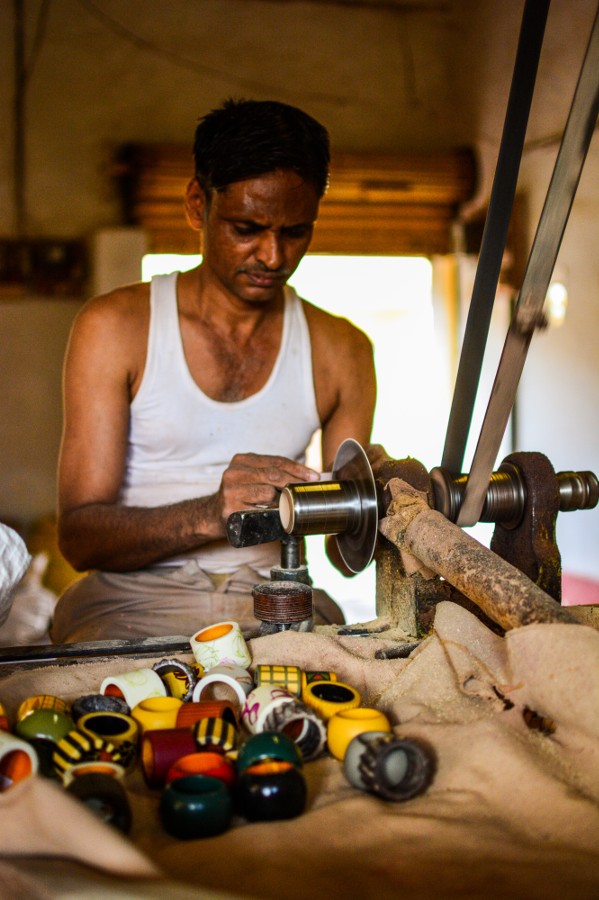
Courtesy: Caleidoscope. in
Coming to the process of making these toys, not much has changed over the years, the same ingredients are used as they were centuries ago, the wood comes from Wrightia Tinctoria tree or Haale Mara in Kannada, the lac comes from a natural resin that is found in the forests. Once the wood is cut, shaped and made into toys, they are covered in colour lacquer that gives them that shine. Natural colours as obtained from kumkum, turmeric, indigo and other vegetable dyes. Such a process and use of organic dyes makes these toys children friendly and more eco-friendly. Many handmade instruments are used in the entire process of making Channapatna crafts, women especially are believed to still use their hands and feet to make smaller pieces. Screwpine leaves are used to finally smoothen out the toys that are made after certain instruments are used to add in the carved details.
Channapatna style began as simply a toy-making community that has now evolved and grown into including more small and simpler items within its diaspora. Now, we have Channapatna style jewellery, home decor items and the newly unveiled mascot of Museum Expo, the 5 feet tall Bronze Dancing girl.
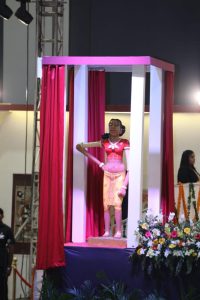
One family in Channapatna can roughly make around 200-300 pieces in a month, fluctuating with the number of people within the family that are working on the craft. The craft has severely dwindled over the years, around 5000 families were working on the craft some 20 years ago, that number has significantly gone down in current times.
Many reasons exist for artisans to not take up this craft anymore from financial constraints to evolving aspirations in order to earn a better livelihood. Another reason for the decline in makers of Channapatna toys is the influx of cheaper Chinese toys and plastic variations in the market since the early 2000s.
However, many craft revivalists, not-for-profit organisations, collectives have tried to revive and preserve this unique and delightful artform from dying. The Design Centre under the Development Commissioner, Handicrafts, Bangalore hired special designers to incorporate new designs into the realm of Channapatna toys and make it more appealing for the modern buyers. Thousands of people are involved in the marketing and selling of these toys. The KHDC plays a major role in marketing their products, selling these toys at a reasonable rate in the government owned emporiums in Bengaluru. The artisans over the years also learnt and adapted to the changing tides and made crafts catering to the growing and evolving population in order to sustain their craft. Moving with the times, artisans now produce articles for interiors in addition to traditional products.
Many exporters and entrepreneurs have entered the business of selling these unique, indigenous toys to a foreign audience and have found a market to sell them online. Maya Organic a Bengaluru based not for profit organisation that power lathe machines and factory units that manufacture Channapatna toys. Being a male-dominated community based craft, Maya Organic have tried to bridge the gender gap by hiring more women in their workforce to make these toys.
It was also announced recently that the Krantivira Sangolli Rayanna Railway Station of Bengaluru shall be selling the Channapatna toys as a part of the One Station One Product (OSOP) scheme that was announced in the Union Budget for 2022-23 by Niramala Sitharaman, our Union Finance Minister. As a result the Channapatna toys stall was inaugurated last year and it is bound to support artisans and the craft from flourishing.
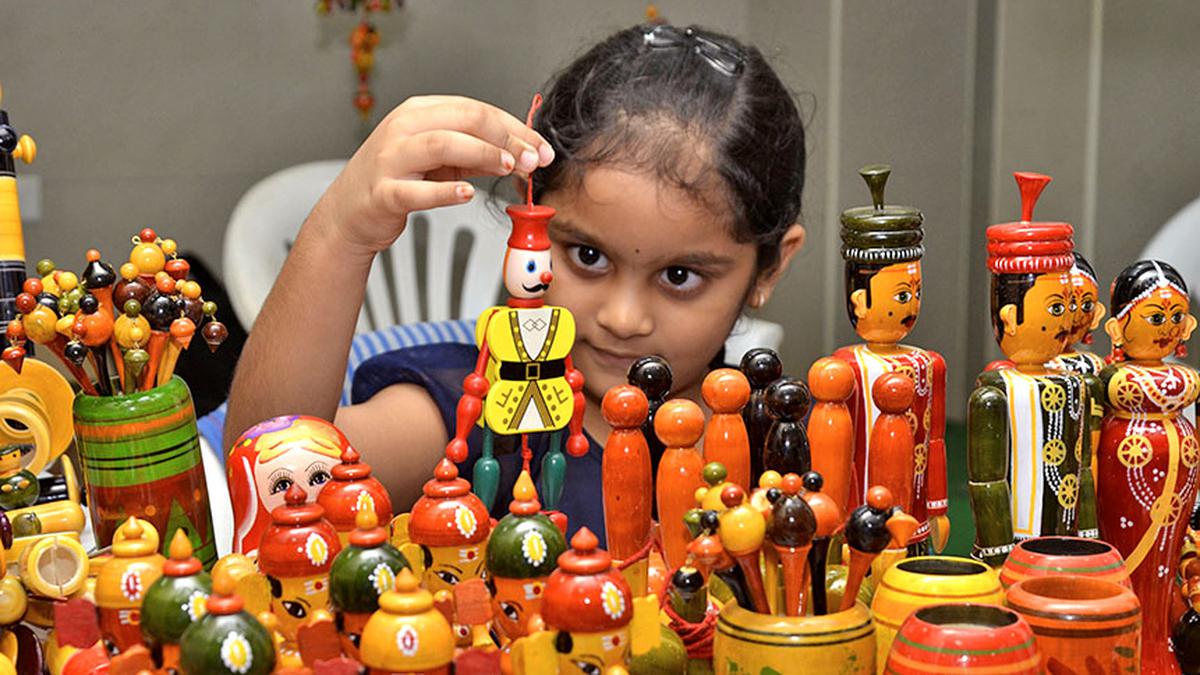
In times when the plastic and mass-produced crafts and items have taken over the world, Channapatna toys stand as a beautiful testament of the artistry and hard work of Indian craftsmanship. The artisans capture the innocence and effervescence of childhood in their toys and craft creations. These pieces are unique labours of love captured in a miniature format. In the hands of children, these toys become vessels of creativity and showcase the talent of indigenous artists to these young growing minds. Children shall learn to respect our Indian crafts if they are exposed to the beauties of it at a young age, they help children nurture a sense of wonder, appreciation for the natural world and the culture around them.
Channapatna toys are reflective of the innocence and simplicity and suggestive of the smaller joys that art and crafts can offer us.

